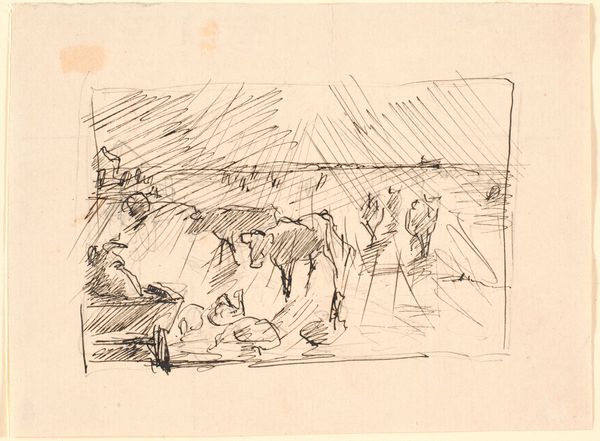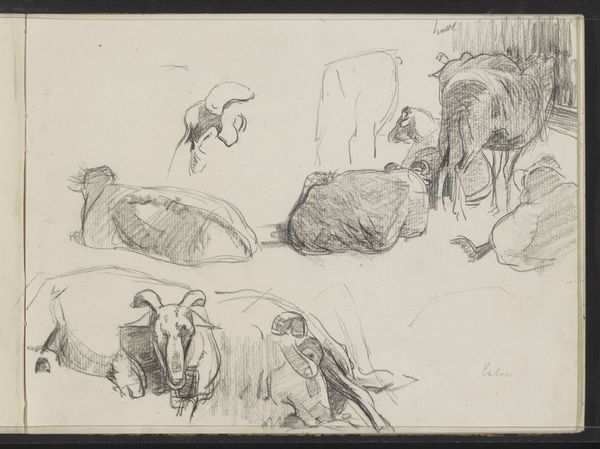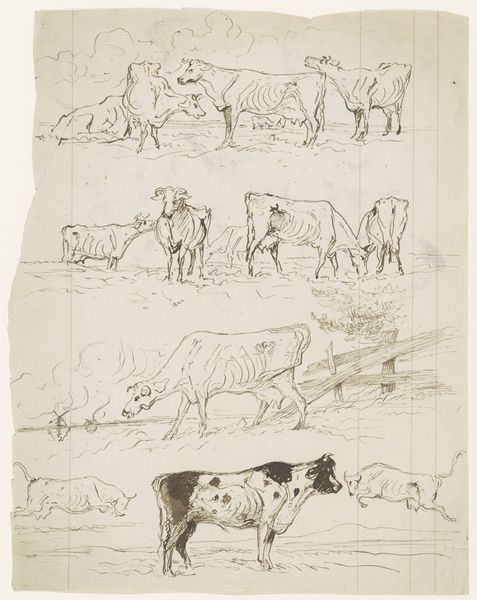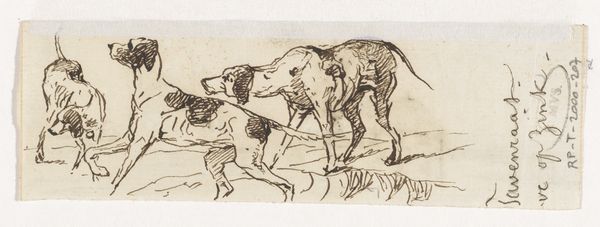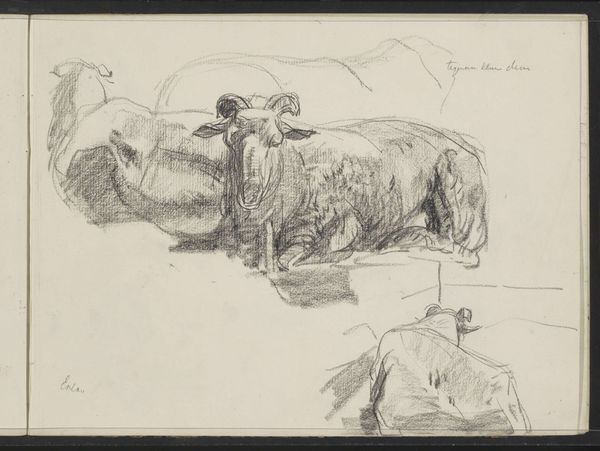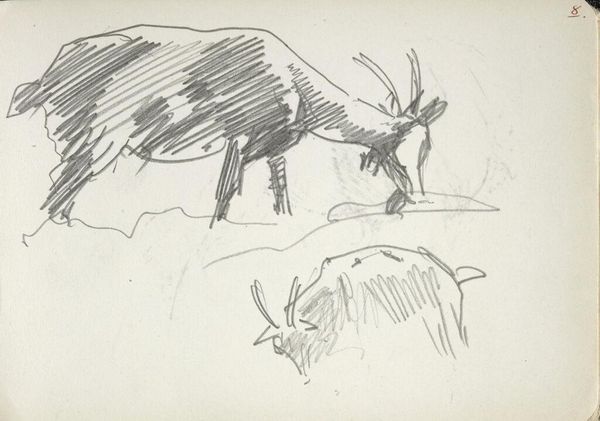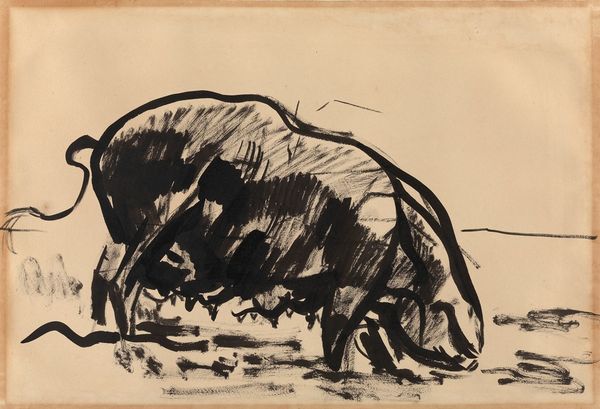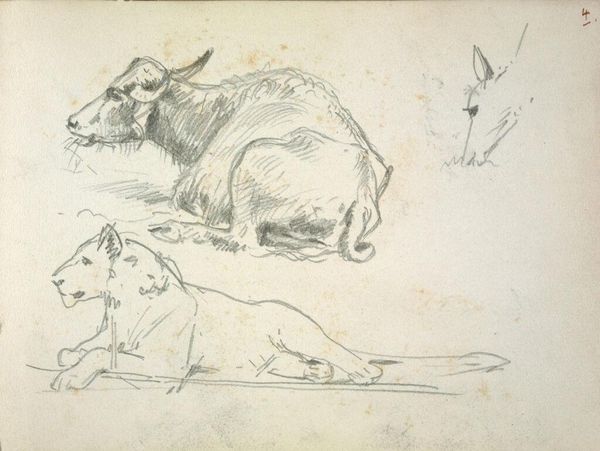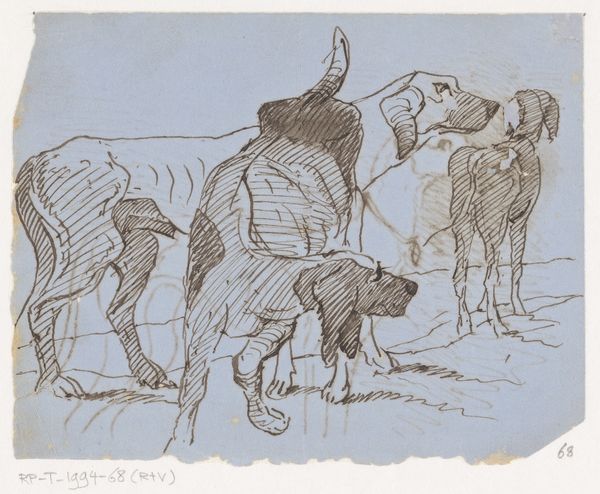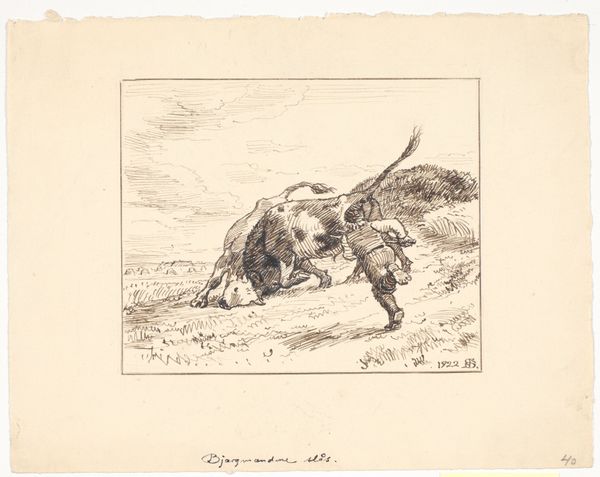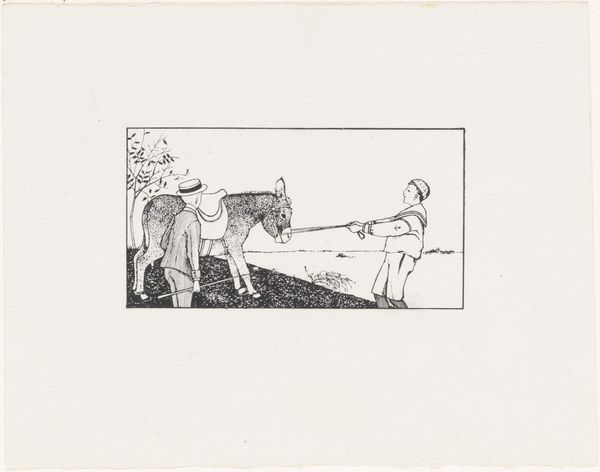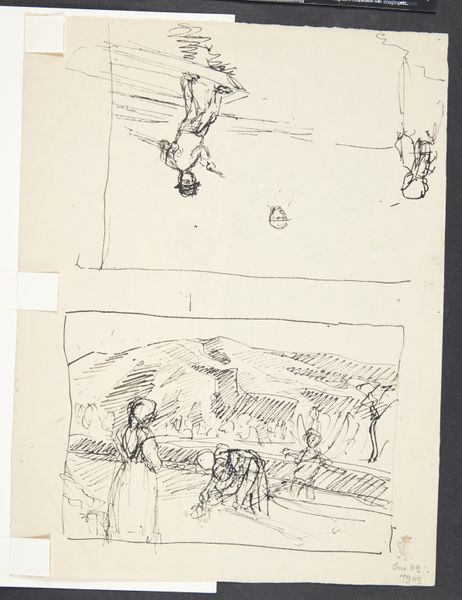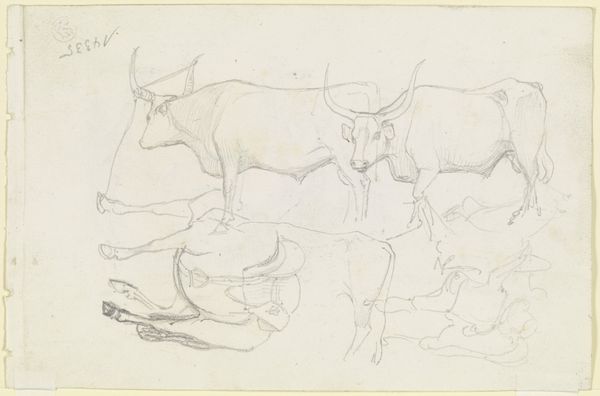
drawing, ink, pen
#
drawing
#
quirky sketch
#
narrative-art
#
pen sketch
#
figuration
#
personal sketchbook
#
ink
#
idea generation sketch
#
sketchwork
#
ink drawing experimentation
#
geometric
#
pen-ink sketch
#
sketchbook drawing
#
pen
#
storyboard and sketchbook work
#
sketchbook art
#
modernism
Dimensions: height 255 mm, width 210 mm, height 70 mm, width 170 mm
Copyright: Rijks Museum: Open Domain
Curator: What strikes me immediately about this piece is the raw energy—it's chaotic, even violent. The immediacy of the lines suggests a moment of high drama and risk. Editor: That is a very keen observation! What we're looking at is a pen and ink drawing by Leo Gestel, titled "Betere in gemeenschap," dating from around 1935, now residing in the Rijksmuseum. The title translates roughly to "Better in community." I see two distinct vignettes: one showing a bullfight, the other perhaps its consequence. Curator: Interesting! I can see why you say "Better in community," given the collaborative dance – if you can call it that – between the matador and bull. But there is violence. Do you feel that title has any irony embedded? Are we looking at critique on display or an observation about inter-relation in times of stress? Editor: I would argue it's complex, not ironic. Consider the socio-political context. The 1930s were a period of immense upheaval. Perhaps Gestel is exploring ideas around the roles of individual actors under pressure, a sort of choreography under duress that leads toward inevitable sacrifice, either of the individual for the sake of the community, or *by* the community itself. Look at the posture of the figure in both scenarios; they are inverses of one another. Curator: That's fascinating. It does provoke a sense of inevitability. Looking at it from a purely symbolic perspective, bulls, matadors—these are very loaded archetypes aren't they? There’s a power dynamic, aggression, skill. How does Gestel subvert or reinforce those existing notions, I wonder? Does his loose, almost frantic linework change how these iconic figures are viewed? Editor: It seems to me he avoids idealizing either. The bull isn't some symbol of virility or untamed nature here, and the matador doesn't represent heroic grace either. They are both players in this fraught social exchange, or "community." Gestel, through his almost panicked sketches, seems intent on capturing the unstable quality inherent in the exchange itself; this volatility is part of his story too, isn't it? Curator: Absolutely. I keep returning to the figures mirrored on the top and the bottom halves; seeing the reflection creates an ominous sort of foreshadowing for either or both figures involved. Gestel creates a feedback loop in one sheet of paper. Editor: Exactly! This image is quite deceptive at first glance, but there are layers upon layers here—gesturing to cycles of power, individual roles, sacrifice. Thank you for illuminating how it participates in larger narratives about identity and community.
Comments
No comments
Be the first to comment and join the conversation on the ultimate creative platform.
